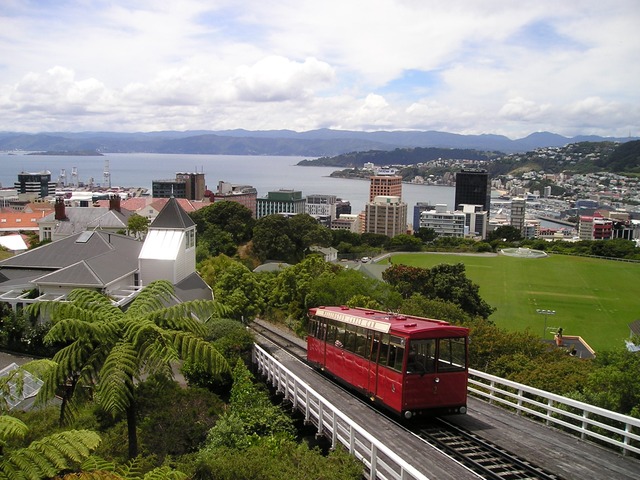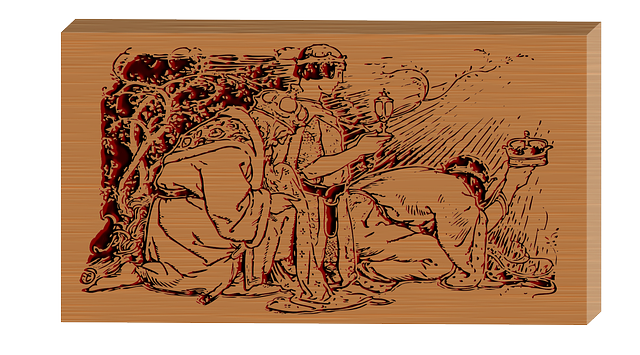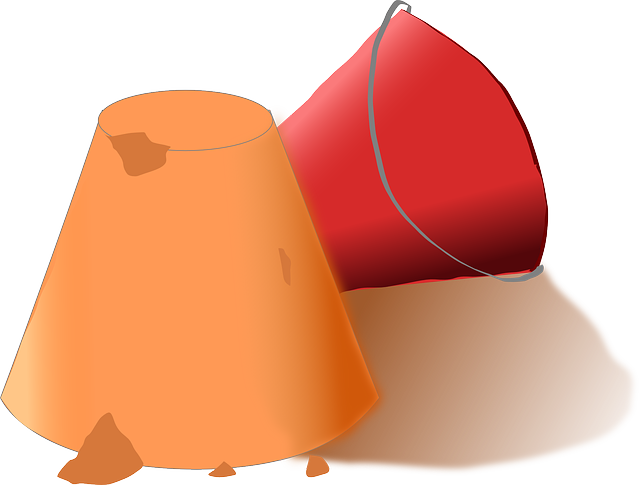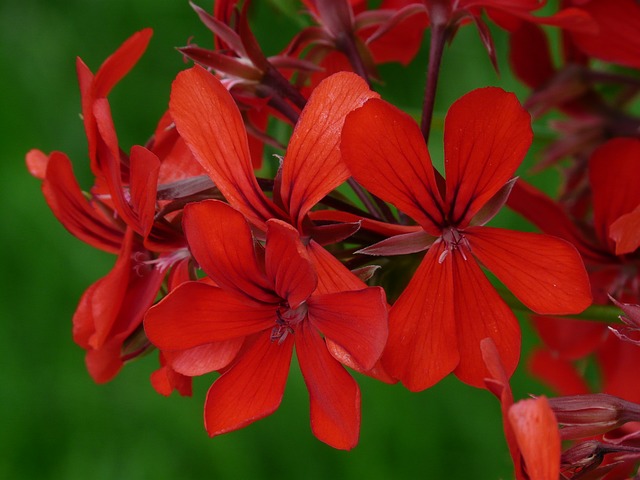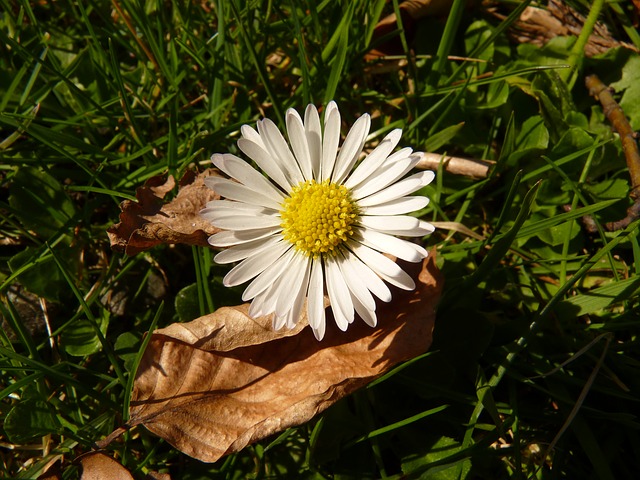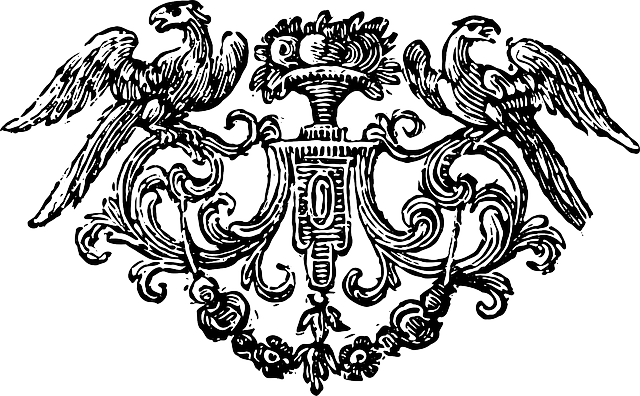شمخلة غازي قمق
|
شمخلة غازي قمق
شمخلة اللك
لك: گازيگـُموكسا شمخلـّوگ
لـَكسا شمخلـّوگ | |||||||||||
|---|---|---|---|---|---|---|---|---|---|---|---|
| القرن الثامن–القرن 17 | |||||||||||
|
الفهم
| |||||||||||
| العاصمة | غازي قمق | ||||||||||
| الدين | الإسلام | ||||||||||
| الحكومة | ملكية دستورية | ||||||||||
| شمخل | |||||||||||
| التاريخ | |||||||||||
• تأسست |
القرن الثامن | ||||||||||
• انحلت |
القرن 17 | ||||||||||
| |||||||||||
شـَمـْخـَلة غازي قمق (Казикумухское шамхальство، بالإنگليزية: Shamkhalate of Kazi-Kumukh) — دولة لقومية اللك تواجدت في أراضي ما يسمى اليوم داغستان في القرن 11-17. عاصمة الشمخلة كانت غازي قمق. وفي القرن 16، كانت الشمخلة تتألف من المناطق التالية: جزء من شمال أذربيجان، جنوب داغستان، إمارة تاركي، إمارة تومن، وإمارة چچنيا (ميچيكي) وجزء من قبردة.
الشمخل الحاكم في القرن الثامن
في القرن الثامن، سعت الخلافة العربية (مسلمة بن عبد الملك) بلا هوادة للحصول على موطئ قدم في داغستان للهيمنة السياسية والاقتصادية على شرق القوقاز. وفي عام 733 أرسى العرب حكمهم في كموخ (قمق) وبنوا مسجداً جامعاً. حاكم كموخ كان يحمل اللقب "شمخل". في عام 777 اكتمل بناء المسجد الجامع في كموخ، حيث استقر الحكام المسلمون. عام 797 شن الخزر غزواً على داغستان.
في القرن الثامن الميلادي في منطقة داغستان الجبلية كان هناك ممالك مثل: طبرستان، تصغور، قمشخ، خنزخ، وكايتق. في القرن التاسع حررت داغستان الجبلية نفسها من سلطة الخلافة العربية. بحلول عام 965 تفككت خاقانية الخزر.
تسيد الإسلام في القرنين 11-12
عند نهاية القرن 11 جعل الشماخل الإسلام دين الدولة في قمق. أصبحت قمق معقلاً رئيسياً للإسلام في لاكيا حيث دُفن الأمير قلانطار، قائد المحاربين المسلمين والداعي للإسلام قد وصل من مكة إلى هناك في القرن الحادي عشر. شمخل، وحاكم قمق الإقطاعي، كان لديهم قوة عسكرية من المحاربين المسلمين (الغزاة) تنتهج سياسة نشطة لنشر الإسلام في بلد الجبال. جميع عام كان الشمخل ينظمون غزوات عسكرية التي كانت في بعض الأحيان بمساعدة فيرابورز الأول (1063–1096)، حاكم شيروان. وبالتالي اكتسبت قمق بادئة شرفية، "الغازية".
المملكة المسلمة وعاصمتها غازي-قمق، كانت قد تأسست فيما بين القرن 11-12، بدأت بلعب دوراً هاماً في الحياة الروحية والسياسية في داغستان. مع شمخلة غازي قمق ظهر عدد من التشكيلات السياسية الأخرى في داغستان مثل معتصمية طبرستان، تصغور، Nutsalate of Avaria and Utsmiate of Kaitag.
عبر قمق كان يمر أحد فروع طرق الحرير الشمالية، حيث كان يصل التجار من بخارى، إسطنبول وهندسوتان. تنتسب شعوب داغستان إلى الحضارة الإسلامية الأكثر تطوراً في عالم القرون الوسطى.
الغزوات التتارية المنغولية في القرنين 13-14
في 1239 غزا القبيل المضىي داغستان. ويقول م. كوربيڤ أنه بعد إخضاع دربند وتاركي، اتجه التتار-المنغول للإستيلاء على عاصمة اللك، مدينة "اللك وقوميك". أول قتال مع التتار-المنغول سقط على مشارف قرية أگول في ريچا، حيث اتخذ جيش الشمخلة مواقع دفاعية. ودارت معارك طاحنة بين جيش الشمخلة والقبيل المضىي. وبعد 25 يوماً من القتال في رچا، تراجع الشمخل إلى قلعته في الجبل. واقترب التتار-المنغول من قلعة قاضي-كموخ وبدأوا حصاراً باستخدام الحراقات والمنجنيق. استمر حصار غازي قمق أكثر من ستة أشهر.
الاستيلاء على غازي قمق
فيثمانية أبريل 1240، سقط المركز الديني والسياسي العتيق "اللك والقوميك"، المدينة الحصينة للكموخ، ودمرها المنغول-التتار. في العصور القديمة على قمة التلال في قمغ كانت هناك الكثير من القلاع المعروفة باسم خانال-نطقا، بورگاي-نطقا وچيكولا-قان التي كانت متاخمة للأحياء السكنية. تم أخيراً الاستيلاء على خصن چيكول. لعدة سنوات ظلت قمق والقرى المحيطة بها تعبير عن أطلال.
حسب م. كوربييڤ كان هناك حصناً على مسافة غير بعيدة عن قمق تم بناؤه في أوائل القرن الرابع على يد ملك اللك. يمكن بسهولة رؤية أطلال هذه القلعة اليوم: "These are the bare stone-walls of three meters wide, on which a wagon can pass freely, bits and pieces of three round and enormous in form foundations of towers that are in the upper northern part of the ancient settlement. Towers probably were symmetric, one large in the middle and two little on each side, built into a wall". On the mountain "Khatti-baku" ("The hill of the cross" from Lak language), Mongols destroyed a unique monument of medieval culture — chapel of the Lak king built in the 7th century.
Ismey-Haji Guseinov writes: "In spring of 1240 Bugdei, one of warlords of Batu Khan, approaches Kumukh and after a fierce resistance of defenders of the fortress takes the capital of Shamkhalate. However, Mongols had not managed then to establish themselves in Lakia as well as in other regions in the mountains of Dagestan". Shamkhalate restores its might and becomes the strongest in Northern Caucasus. In 1302-1304 a "Persian Shah" of Islamic Ilkhanate of Iran who sent gifts to Shamkhal was none other than the descendant of Genghis Khan, Ghazan Khan (1295–1304). Records of Ali Kayaev show that by the early 14th century in Kazi-Kumukh along there were 14 mosques.
حملات جديدة
In the period of 1318 the empire of Tataro-Mongols was divided into two camps: Ilkhanate headed by أبوسعيد ودولة القبيل المضىي headed by Uzbeg Khan. The border in the Eastern Caucasus passed near Derbent. In the center of this conflict was Kazi-Kumukh which for a long time endured the devastating raids of both powers. Kazi-Kumukh was destroyed by Turks eight times. Kammaev S. K. writes: "The mightiest foreign invaders waged wars on Kumukh and here were the most cruel battles with them".
Nizameddin Shami mentions "Kazi-Kumuk" as an ally of the Golden Horde. At a certain period of time Dagestan was under the influence of Tataro-Mongols. At the beginning of 14th century Shamkhalate is named in Turkic as Dagestan — Country of the Mountains.
تدخل تيمورلنك
In the spring of 1394 Tamerlane intruded into Derbent. In 1395 taking over all the lowlands of northern Dagestan, Tamerlane moved to Kaitag. Shamkhal of Kazi-Kumukh undertook few campaigns against Tamerlane. In one of them "Shamkhal of Kazi-Kumuk and Avhar" with an army of 3000 persons attacked Tamerlane in a neighborhood of Akusha-Dargo. Nizameddin Shami reported that "Shamkhal of Kazi-Kumuk had a custom to accomplish each month a military campaign against the unbelievers" that Tamerlane wanted to put to his use. Eoan de Galifontibos writes that: "Tamerlane made an attempt to get into the mountains of their country having one hundred thousand armed worriors but before a dense forest he met an army that infliceted on him such losses that Tamerlane ordered to retreat" understanding that he will be able to subordinate this country only by a peaceful way. A battle against Tamerlane was perpetuated in Lak epos of Partu Patima.
In 1395 on the banks of river Terek Tamerlane defeated the army of his opponent Tokhtamysh, the Khan of Golden Horde. In 1396 Tamerlane returned to Dagestan and went against Shamkhal of Kazi-Kumukh. After many months of siege and battles Tamerlane took fortresses of Kuli and Tayus. Sharafuddin Yezdi, Tamerlane's court historian, writes: "Heavy resistance is overcome, fortresses captured, inhabitants defeated, Shamkhal is killed himself". Historians of Tamerlane do not inform about the capture of Kazi-Kumukh.
Lak rulers concluded a treaty with Tamerlan to carry on "a holy war against the unbelievers" as they did before. Tamerlane richly endowed the feudal apex of Laks ("emirs, nobles, grandees"). In this connection the Islamic clergy of Kazi-Kumukh strengthened its positions and influence in the region. Shikhsaidov A. relates this time to the holy war that Shamkhal of Kazi-Kumukh waged on "unbelievers" in neighbouring lands. Shamkhal of Kazi-Kumukh gets the title "Wali (ruler) of Dagestan".
Later a common economic zone emerged with neighbouring regions. Unknown in other regions of Caucasus, every village specialized in a certain craft. Almost every village was a workshop organization, supplying the needs of common internal and external market. The second name of Kazi-Kumukh becomes a "large market" where a fair every Thursday was conducted.
At the end of 14th century there appears a catholic mission of Franciscans, trying to establish the "Episcopate of the Caspian mountains".
صعود نجم الشمخلة في القرنين 15-16
In 15th century Shamkhals of Lakia emerge as rulers and leaders of Islamization process in Dagestan. In 1430 Gazi-Gumuk was an important center of Muslim education in Dagestan. Kazi-Kumukh was the capital of Shamkhalate and not surprisingly here arrived from far away a scholar of Islamic sciences Ahmad bin Ibrahim bin Muhammad al-Gazi-Gumuki ad-Dagestani al-Hasani al-Shafiyi, died in 1450. He was a big religious figure, mudarris, scientist, rewriter of manuscripts and a preacher of Islam in Dagestan. Before moving to Kazi-Kumukh he taught at the university of Al-Azhar in Cairo. Some time lived in Yemen and then by the order of the ruler of Egypt he arrived in Kazi-Kumukh. From December 1434 Ahmad al-Yemeni lived in Kazi-Kumukh where he had five children. Ahmad al-Yemeni played a noticeable role in political and spiritual life of Shamkhalate of Kazi-Kumukh. Kazi-Kumukh becomes one of the centers of Islamic jurisprudence in the Caucasus. On the "Yemeni cemetery" preachers of Islam from Yemen were buried. Krachkovski I. writes about "Dagestan and Yemen" in his works.
According to Ali Kayaev the "inhabitants of Andalal accepted Islam among the first in Dagestan". In the medieval Dagestan there were established several centers of Muslim theology and sciences such as: Gazi-Kumukh, Derbent, Akhty, Tsakhur, Akusha, Sogratl, Khunzakh, Andirey, Yarag and Bashly.
There were several states in Dagestan — Maisumate of Tabasaran, Nutsalate of Avaria, Utsmiate of Kaitag, Derbent, and Shamkhalate of Kazi-Kumukh which consisted of several states of the southern and northern Daghestan such as: Kazi-Kumukh, Agul, Kura, Rutul, Tsakhur, Andalan, Andi, Tarki, Bujnak, Andirey and Tumen.
توسيع رقعة الدولة
In 15th century Shamkhals ("Padishah al-Gumuki" in local sources, "Shevkalsky Tsar" in Russian) completed the religious enlightenment of Dagestan and with the support of Utsmi of Kaitag, Maisum of Tabasaran and Nutsal of Khunzakh, directed the energy of highlanders to external wars. Raids on "unbelievers" of Georgia and Cherkessia become regular. According to Turkish sources the army of Shamkhal in this period consisted of about 100 thousand man. In a "Testament" of Andunik-Nutsal (1485), who estimating the military power of feudal rulers of Dagestan wrote: "100 thousand men in the army of Padishah al-Gumuki".
In this period Shamkhalate of Kazi-Kumukh becomes the largest state of the Caucasus, spreading beyond Terek river in the north, and in the south reaching Shabran. Laduev U. writes that after embracing Islam "Chechens consented to paying tribute to Shamkhal named as Wali of Dagestan". Also "Chechnya is the possession of Shamkhal". Some princes of Kabarda were dependent on Shamkhal. The territory of Shamkhal covered the whole of North-Eastern Caucasus and part of Transcaucasia. Academician V. Barthold writes: "Shamkhalate of Gazi-Gumuk was spreading its political domination from its mountainous country in the north-eastern direction up to the coastal regions in 11th-16th centuries". Historian Gadjiev V. writes: "Shamkhalate in the period of its political domination became a very large state on the map of medieval Caucasus".
التدخل الفارسي الأول
In the first half of 15th century Safavid Persia enters the political arena of Caucasus. The support of Safavids became Turkic nomadic tribes that got the nickname of Qizilbashes – red heads.
في 1447 ارتقى الشاه جنيد صفوي، زعيم القزلباش، عرش بلاد فارس. Junayd decided to conquer Shirvan and Dagestan. The ruler of Shirvan Khalilullah appealed to Shamkhal of Kazi-Kumukh for help. In 1456 on the banks of river Samur a battle took place between the troops of Junayd and the united forces of Shamkhal of Kazi-Kumukh. The Persian army was defeated. Shah Junayd was killed himself.
التدخل الفارسي الثاني
في 1456 the proceeding Safavid ruler الشيخ حيدر took دربند and began to carry out raids on the off-shore districts of Shamkhalate. In 1488 in Tabasaran during a bloody battle, Shah Haydar sustained defeat.
In 1547 the ruler of Shirvan Alqas-Mirza allied with Shamkhal of Kazi-Kumukh and heaved up a revolt against Safavids, but after the suppression of revolt retreated to Kazi-Kumukh. In 1549 in Shirvan a new revolt against Safavids took place headed by Burhan-Mirza who retreated to Kazi-Kumukh as well. However later Shamkhal of Kazi-Kumukh and the ruler of Shirvan began competing for the hegemony in the Northern Azerbaijan. King of Kakheti Levan, an ally and kinsman of Shamkhal, also feuded with Shirvan.
In 16th century Ottoman Empire enters the political arena of Caucasus. Safavid Persia becomes the strongest regional opposition. Wars between Turkey and Safavid Persia begin. The rulers of both countries keenly desired to ally with Shamkhal of Kazi-Kumukh, as he was a big political figure in the Caucasus. King of Kakheti Levan became a mediator between the Shah and Shamkhal, promoting the convergence of the latter.
Ismey-Haji Guseinov writes: "Between Safavid Shah and Shamkhal of Kazi-Kumukh a political and military alliance was made which was strengthened by a marriage between Shah Tahmasp I and the daughter of Shamkhal. Together with fiancée to Persia went cavalry troops led by Sultan, the son of Shamkhal. From this marriage the Shah had daughter Perihan-Khanum and son Sulaiman-Mirza".
عهد الرخاء
In the 15th-16th centuries political might of Shamkhal of Kazi-Kumukh reaches its peak. Shamkhal collected tax in grain and cattle from the territories of Northern Azerbaijan, Dagestan and Cechnya. In the time of war Shamkhal was the leader of the army. Great powers of that time as روسيا, Ottoman Empire and Sefevid Persia consider Shamkhal to be a strong ruler. The house of Shamkhals of Kazi-Kumukh was one of the most ancient ruling dynasties in Dagestan that had intermarriages which the princes of Kabardino-Balkaria, rulers of Persia, Kakheti and Crimea.
The city of Tarki becomes a strategic point of Caspian Sea passage that permitted to control the movement of troops and merchant caravans which brought large revenues to the treasury. Important root of caravan trade in Dagestan was the Caspian, leading from Derbent to Tarki and through Andirey to Astrakhan, also via the North Caucasus to Kabarda and further to the Crimean and the Ottoman territories. Caravans also traveled through the central mountainous Dagestan - from Shaki to Kazi-Kumukh, Avaria and then to Chechnya. Dagestani merchants actively involved themselves in transit trade. In commercial transactions gold and silver money of neighboring states were used.
Shamkhals carry out frequent trips from Kazi-Kumukh to their winter residence in Bujnak city and later in Tarki. Ali Kayaev writes about Shamkhals that "their strong branch migrated from Kazi-Kumukh to the lowlands" of Dagestan.
Besides Kazi-Kumukh there were many other branches of extended Shamkhal family that ruled most of Dagestan: branch of Bujnak where the residence of Vice-Shamkhal was, branch of Tarki, branch of Andirey, and branch of Andi that united Ando-Tsezian people. In the south of Dagestan Kura was the stronghold of Shamkhal of Kazi-kumukh and military center that blocked the path of invaders through the central mountainous Dagestan. In the course of Islamization, Shamkhals became rulers of the conquered lands. As Marshaev writes: "On subordinated territories Shamkhals settled their sons on beneficiary rights, many of whom eventually became hereditary landlords". Derbent, Tabasaran and Tsakhur in greater period of their history were part of Persia.
The title "Shamkhal" in the first half of the 16th century was no longer hereditary, and was passed by seniority. Turkish historian Mehmet Efendi writes about the election of Shamkhal that members of the house of Shamkhal "following the ancient custom of their ancestors depart for Kazi-Kumukh. Here in the gathering of princes the election of a new Shamkhal takes place". Also there was elected a "Krim-Shamkhal", meaning the Vice-Shamkhal, from Lak "Kiriw-Shamkhal".
Inscriptions from cemetery in Kazi-Kumukh inform that in 1553, prince Muhammad was killed in winter "in a battle with unbelievers of Cherkessia". "This is the grave of Budai-Shamkhal, son of Umal Muhammad-Shamkhal". Umal Muhammad was the father of two brothers — Surkhay and Budai. Ayetberov notices that the descendants of Surkhay we see only in lowlands of Dagestan (Ildar-Shamkhal, Girey of Tarki and others) and the descendants of Budai only in Kazi-Kumukh. It is considered in the historiography of Dagestan that Shamkhals migrated to the lowlands from Kazi-Kumukh not later than the 16th century. In the 17th century Shamkhals were still buried in Kazi-Kumukh in the cemetery of Shamkhals. Last grave belongs to Surkhay-Shamkhal and dates back to 1641.
العلاقات مع روسيا
In 1556 diplomatic relations with the Moscow state were set. The peaceful embassy of Shamkhal brought Ivan the Terrible a number of rich gifts, one of which was extraordinary: an elephant, not seen up to that time in Moscow.
In 1557 prince Temruk Idarov of Kabarda appealed to Ivan the Terrible with a request to help and protect him against the raids of Shamkhal. The heir of Shamkhal, the Vice-Shamkhal, appealed to Russia with a request to accept his allegiance.
In 1560 Ivan the Terrible sent his general Cheremisov with troops by sea from Astrakhan against Shamkhal of Kazi-Kumukh. Cheremisov landed in Tarki, defeated the detachment of Shamkhal, took over Tarki but decided not to remain there fearing the arrival of Shamkhal forces from Kazi-Kumukh. Russia won over Shikhmurza Okotsky who rendered considerable services to prince Temruk, the opponent of Shamkhal. Russians capturing Kazan and Astrakhan were moving to Caucasus.
في 1566 ماتلوڤ، أحد أمراء قبردة، turned to Ivan the Terrible with a request to put a town on Terek River near the mouth of Sunzha River.
في 1567 trying to prevent Russians to establish their stronghold at the confluence of Sunzha and Terek, Budai-Shamhal and later his brother Surkhay were killed on the battlefield, as evidenced by their tombstones at the cemetery of Shamkhals in Kazi-Kumukh.
چوپان-شمخل
في 1569 prince Chopan, son of Budai-Shamkhal, يـُتوَّج في غازي قمق as Shamkhal. The ceremony of coronation was of Iranian standard: girding with a sword and putting a crown on the head. Chopan-Shamkhal became the famous king of Dagestan. Territory of Chopan-Shamkhal in the north extended beyond Terek river and adjoined the Khanate of Astrakhan. In the west his territory included the whole of Chechnya and part of Kabarda. Chopan-Shamkhal had allies among the nobles in Kabarda who served him. In the south, territories of Chopan-Shamkhal extended "up to Shemakha itself" according to I. Gerber. The name of Shamkhal must be Persian, known as "Juvan" and pronouncing by Turks as Chopan. There are other forms such as: Chupan, Jufan, Chobin, Chopalov. The Shamkhalate state was managed according to Islamic laws. Judiciary belonged to Qadies. Constabulary functions were executed by "Nukers". Government policy was enacted by Divan assembly.
In 1570 Chopan-Shamkhal goes with his troops to capture Astrakhan. This expedition was undertaken jointly with Turks and Crimeans. The siege of Astrakhan was not successful and troops retreated to Azov. Chopan-Shamkhal demolished the Russian fortress on Sunja river, intruded in Kabarda and took part in a battle against the army of ally of Tsar Ivan IV on the side of the Crimean Khan Devlet-Girey.
In 1571 Crimean Devlet Girey-khan took Moscow and categorically demanded to demolish a fortress that was not allowing Muslims to set forth for Haj and carry on trade. The fortress on Terek erected for protecting Kabarda and her ruler Temruk from Shamkhal was demolished. However in spite of demolishing the fortress, advancement of Russians to Caucasus by the end of 1580th recommenced.
In Persia in the court of the Shah in the period of celebrations, the king of Dagestan had an honorable place next to the throne of the Shah. Shamkhal was among the noblest and strongest rulers and allies of the Shah, along with king of Georgia and ruler of Afghanistan. According to A. Kayaev influence of Chopan-Shamkhal in Caucasus was great and "he allowed himself to interfere in matters of inheritance of Persian throne". Sister of Chopan-Shamkhal was married to Shah Tahmasp I (1514–1576). After the death of Tahmasp I in 1576 Haydar Mirza, Tahmasp's son by a Georgian mother, was elected on a Sefevid throne. In view of this Chopan-Shamkhal led his troops together with other supporters to the capital Tabriz. Haydar was removed and Ismail emerged triumphant.
تدخل القزلباش
في 1577 في البلاط الملكي لبلاد فارس، سقط انقلاب، قـُتـِل فيه الشاه إسماعيل الثاني. Power in Persia was seized by Qizilbashes who were hostile to Sunni Caucasus. In the 16th century Qizilbashes overmastering all of Iran began to raid Sunni Shirvan, which wasn’t dangerous for Dagestan. Chopan-Shamkhal jointly with his brother Tujalav-Bek who was the ruler of Avaria, Gazi-Salih of Tabasaran, and in alliance with the Turkish army undertook a military campaign against Qizilbashes, who were completely defeated and retreated out of Shirvan.
After turning Qizilbashes out of Shirvan, Chopan-Shamkhal set friendly relationships with Turkey, carried out a visit there and was met in Salanchaks in Eastern Anatolia with great honours shown to the dignitaries of states. In reward for taking part in war against the Qizilbashes, Chopan-Shamkhal was given many gifts, including banners embroidered in gold, dressing-gown, sabre and war-horse with complete equipment. Ibrahim Pechevi reports that "Osman-Pasha married the daughter of Tujalav-Bek, brother of Chopan-Shamkhal". Chopan-Shamkhal pledged to protect Shirvan. Yakob Raynes writes: "All Caucasus had respect for him".
تدخل العثمانيين
However the end of 70th was marked by a war between Dagestan and Turkey. استأنف السلطان مراد الثالث العمليات العسكرية ضد الفرس. Chopan-Shamkhal understood that establishment of Turkey in Shemakha can result in the loss of independence of his state. In the beginning Shamkhal rendered support to the Turks against Persia, but later refused to participate in wars with Persians.
In 1578 Chopan-Shamkhal died in Bujnak. Bakikhanov A. K. writes: "Situation in Dagestan was dim. Chopan-Shamkhal who possessed all the lands from the borders of Kaitag, Kura, Avaria, Cherkesia and Terek river up to the Caspian Sea, died in Bujnak. His sons divided all the lands between themselves". These events served the first reason for disintegration of Shamkhalate, and the following internecine war between feudal rulers of Dagestan.
In 1578 Caucasus was invaded by 200 thousand army of Mustafa-Pasha. The Turks capturing Shemakha began to make military expeditions into the mountains of Dagestan. In 1582 a detachment of Jafar-Pasha went from Derbent to Gazi-Kumukh. "Gazi-Kumukh was subjected by Turks to a terrible devastation". These predatory campaigns raised the population of Dagestani villages in arms against the Turkish Janissaries.
التحالف المناوئ للشمخل
In 1588 Georgian ambassadors Kaplan and Hurset informed Russian Tsar about the raids of Shamkhal and asked the Tsar to send troops. Georgian Tsar Alexander gave Moscow all the information about the army of Shamkhal and the plan of the route: Tumen, Tarki, Kazanish, Kazi-Kumukh, Tsakhur, advising Russians to set fortresses in Tarki, Turali, Bujnak, and to defeat Shamkhal it is necessary to capture Kazi-Kumukh. In 1588 Russians captured the principality of Tumen in the northern part of Dagestan. Inhabitants of Tumen paid tribute to Shamkhal.
Shamkhal appealed to the Turkish Sultan for support, informing about the alliance of Russia, Persia and Georgia against him.
Nevertheless, Shamkhalate succeeded to win wars of 1589-1607 with the Moscow state. Attacks of 1590 and 1594 were repelled. Georgia subsequently refuses to fight against Shamkhal. In 1605 Russian army that occupied lowlands of Dagestan (about 50 000 men, including 8000 shooters of the Moscow garrison), was knocked out from fortresses in Sunja, Sulak, city of Tarki and then surrounded and destroyed on Karaman field, 20 kilometres north of Makhachkala. All attempts of Tsar Boris Godunov to conquer Shamkhalate of Dagestan end in defeat.
Here what Dutch merchant Isaac Massa (1587–1635) writes about it in his "Short information about beginning and origin of modern wars and strife in Moscovy": "Tsar Boris sent 50000 men among whom were Polish and Livonians also and most of them perished, not many returned. In Moscow there were people telling so much about that country and people that it would fit few books to write about it and they told that in some places they met people as strong as giants who never part with their weapons, neither in the field at the plough tail nor at home, their dwellings are arranged in large caves because there are many mountains and wonderful valleys besides and in mountains there is much cattle. The one who revealed to us these news was wounded in a campaign by many arrows and told us that he with his comrades roamed for long before they reached the Caspian Sea. So not many returned to Moscow attaining nothing". Karamzin N. M. adds: "This battle was misfortunate".
طبقاً لمعاهدة فرحات پاشا لعام 1590 بين الدولة العثمانية والدولة الصفوية، فقد تم الاعتراف بداغستان تحت حماية السلطان العثماني. ونلك النقطة أكدتها اتفاقيات حول تقاسم القوقاز في 1612 و1619. فشمخلة فاضي كموخ كانت حليفة للدولة العثمانية. والجيش العثماني لم يكن له قواعد قط في داغستان، على العكس من المناطق الأخرى في القوقاز. وقد اعتاد السلطان العثماني حتى يسمي الشمخل "پاديشاه داغستان".
أفول الشمخلة في القرن 17
At the beginning of 17th century military power of Turkey diminishes in Caucasus, which results in regional domination of Persia. Shah عباس الأول من فارس began the conquest of Caucasus, occupied Derbent and put his deputy there. Aggression of Qizilbashes recommences. According to Iskander Munshi, Shah Abbas practiced mass executions of sunnies in Azerbaijan, and violently implanted Shia Islam in occupied territories.
صراع الأشقاء
In 1615 Shah Abbas decided to take advantage of feudal internecine war that was flaming up in Shamkhalate of Kazi-Kumukh. Sultan-Mahmud of Andirey disputed his hereditary rights with Girey of Tarki. As a result of these discords, Sultan-Mahmud adhered to pro-Turkish and Giray of Tarki to a pro-Iranian and Russian orientation. All attempts of Andia-Shamkhal of Kazi-Kumukh to persuade Girey to give up his plans fell flat. Shah Abbas married the sister of Girey and decided to send troops to Dagestan against his opposition. However a revolt that took place in Georgia in 1615 September 15, prevented it. In 1617 the army of Shah Abbas I came to Kakheti trampling everything on its path, turning the cities into ashes and looting monasteries. In 1619 after the death of Girey, Eldar, brother of Girey, becomes the ruler of the Tarki principality. Shah Abbas provoked Eldar to deprecate against Sultan-Mahmud and Andia-Shamkhal of Kazi-Kumukh.
In 1623 after the death of Andia-Shamkhal, a fight for throne between the rulers of Shamkhalate began again. On convention it was decided that the heir of Andia-Shamkhal will be Eldar, and the heir of Vice-Shamkhal (next Shamkhal), will be Aidemir, son of Sultan-Mahmud. In 1623 Eldar becomes Shamkhal of Kazi-Kumukh. Coronation and large banquets took place in Kazi-Kumukh. In 1635 Eldar-Shamkhal died. Aidemir, son of Sultan-Mahmud, becomes Shamkhal. Aidemir travelled to Kazi-Kumukh, "where according to their customs Shamkhal is crowned", gave people horses, bulls and sheep as gifts. He was given allegiance by all representatives of feudal class in Kazi-Kumukh, except for the descendents of Eldar-Shamkhal who were settled in Tarki. The sons of Eldar-Shamkhal being displeased at the election of Aidemir, appealed to the Shah of Persia to support them. In 1640 during internecine wars Aidemir-Shamkhal was killed. Next Shamkhal becomes Surkhay.
التشظي الاقطاعي
Ali Kayaev reports that in the middle of 17th century a fight for the throne of Shamkhalate between the sons of Chopan-Shamkhal "lasted for 30 years. Great number of people died there". Feudal strife led to the formation of some new domains. Dagestan fell into feudal disunity.
In 1642 Surkhay-Shamkhal (1640–1667) moved his capital from Kazi-Kumukh to Tarki. In Kazi-Kumukh "Proud Lak uzdens (free citizens) considered it an insult to the ancient capital". To rule Kazi-Kumukh Laks elect Alibek II who establishes an independent Khanate of Kazi-Kumukh. In this period there existed already in Dagestan such independent states as Kaitag, Avar, Tabasaran, Derbent, Elisu, Mekhtula and Andirey. Subsequently the title "Shamkhal" passes to the nobles of Shamkhalale branch in Tarki where an independent شمخلة تاركي was formed. All Shamkhalate branches in Dagestan were associated with Kazi-Kumukh, and Surkhay-Shamkhal breaking away from Kazi-Kumukh lost his political power in most of Dagestan.
الهامش
- ^ "بعد حتى حصـّن أبومسلم دربند بأحسن ما يمكن، فقد واصل حملته على كموك [كموخ]. خاض بكوات [نبلاء] كموك معارك وقتال شرس، إلا أنه في النهاية هـُزم حكام كموك، ومات الكثير من الكفار. بعد سقوط قمق، حيث احتفظ من ولج الإسلام من أهلها بممتلكاتهم، ومن رفض الإسلام، تم ذبحه ونهبه. في أعلى منطقة بمدينة [قمق] تم إنشاء مسجد الكاتدرائية. في مناطق أخرى من [المدينة] أُنشئت مساجد [أيضاً]. ثم مضى [أبومسلم] لغزوكايتاق. في المعارك اغتال حاكم حاكم كايتاق الشجاع. بعد الاستيلاء على كايتاق أدخل معظم سكانها الإسلام وعين خرجاً سنوياً [...]. من هناك مضى إلى طبرستان".
- ^ А. Р. Шихсаидов, Т. М. Айтберов, Г. М.-Р. Оразаев. «Дербенд-наме» // «Дагестанские исторические сочинения». — М. Наука. 1993.
- ^ Исмей-Гаджи Гусейнов. Лаки в истории Дагестана (VI—XX века). Кавказский Узел / Энциклопедия.
- ^ اعتنق سكان كموخ الإسلام أثناء حملات أبومسلم (733) "الذي عيـَّن معه [شخبل] قاضياً لتعليم الناس شعائر الدين الجديد". أبومسلم "أمر [شخبل وشخبل، معيصم وأوتسمي] في حالة وقوع اجتياح خزري الدفاع باستخدام القوات المتحدة وعدم السماخ للتجار الخزر ببلوغ دربنت [...] بعد جميع الترتيبات من أبومسلم، وصل الخليفة هشام بنفسه في دربند" (См. А. К. Бакиханов. Гюлистан и Ирам. Период второй 644-1258 гг.).
- ^ حسب المؤرخين ڤاسيلي بارتولد وميخائيل پولييڤكتوڤ (Полиевктов)، فإن لقب "شمخل" هومشتق من اسم الحاكم شخبل الذي عيّنه العرب في كموخ. Полиевктов М. А. Из истории северокавказских феодалов ХVII века. «Сб. статей академику Н. Я. Марру». — М. — Л. 1935. С. 746.
- ^ كما يخط عمري رضاء الدين شيخسعيدوڤ (Шихсаидов) خط: "في القرن الثامن الميلادي، أصبح شمخل حاكماً" في لكيا. (А. Р. Шихсаидов. Ислам в средневековом Дагестане (VII—XV вв.). — Махачкала, 1969, с. 97—98.).
- ^ Shakhbal (شمخل) — لقب حاكم القمق. According to Derbent-neme, Muslim, شقيق الخليفة هشام بن عبد الملك، قائد القوات العربية في داغستان، مستولياً على كموخ ويعيـِّن شخبل حاكماً عليها. (См. Дербенд-наме. с. 90—91, 101, 103.). في "تاريخ داغستان"، شمخل — اسم أول من عينه العرب حاكما على كموخ، في داغستان الجبلية.
- ^ On the inner wall of the mosque in Kumukh there remained an inscription: "In 160 (meaning Islamic calendar) they built this mosque for worshiping Allah Almighty", (См. Рамазан Маршаев, Бута Бутаев. История лакцев. 1991.).
- ^ As Bakikhanov writes: "وفي 797 غزا الخزر بجحافل جرارة أراضي عبر القوقاز، فاستولوا على داغستان ودربند وشيروان. وحسب كتاب أوليا چلبي، around 140 thousand Muslims died at that time. Previously there had never happened such a misfortune. As for the decedents of Shakhbal, Khamza and Maisum, appointed by Abu Muslim as rulers of mentioned principalities nothing is known. Dagestani tribes that embraced Islam once again returned to polytheism. There appeared everywhere self-named rulers" (А. К. Бакиханов. Гюлистан и Ирам. Период второй 644-1258.).
- ^ Hasan-Efendi Alkadari does not give a dramatic picture of the Khazar invasion in 180 (797), and does not consider that Khazars conquered Dagestan: "Khazars once capturing Dagestan, Derbent, and even Shirvan, would have beaten Muslims and turn them into apostates. In these regions they would have destroyed all the mosques and minarets built here by Muslims previously, just as the Arabs once coming here completely destroyed previously located here chapels of different religions and have left no traces of them. In addition, they would have removed the governors such as Shamkhal, Utsmi, and Maisum appointed by Abu Muslim [Maslamah ibn Abd al-Malik] here, and from Kadis [religious scholars] no one would have been left. Meanwhile, there still remain in various places the mosques and minarets built in the era of Abu Muslim", (Hasan-Efendi Alkadari. Asari Dagestan).
- ^ Очерки истории Дагестана. — Махачкала: Даггиз. 1957. Т. 1. С. 51.
- ^ Halifa ibn Hayyat informs about the capture "Gumik" and "Khumzakh" by Marwan.
- ^ Бейлис В. М. Сообщения Халифы ибн Хаййата ал-Усфури об арабо-хазарских войнах в VII — первой половине VIII в. // Древнейшие государства Восточной Европы. 1998. М.,2000. С. 43.
- ^ Гасанов М. Р. Дагестан и народы Кавказа в V—XV веках (некоторые вопросы этнической общности расселения и взаимоотношений). — Махачкала, 2008.
- ^ "The troops of Kalantar moved out of Mecca and Medina". Али Каяев. Материалы по истории лаков. Рук. фонд. ИИЯЛ, д. 1642. Л. 263. Перевод с араб. А. Р. Шихсаидова.
- ^ Ali Kayaev wrote that in 500 AH (1006-1007) there came to Caucasus a significant number Gazies [Islamic worriers], headed by Ghazi Amir-Kalantar. Ali Kayaev discovered in Kumukh the grave of Kalantar with the inscription: "This is the grave of Kalantar, protector of religion, the preacher of Islam". Али Каяев. Указ. соч. — Л. 263–264.
- ^ Б. Г. Алиев, М. С. Умаханов. Дагестан в XV–XVI вв. (Вопросы исторической географии) / ИИАЭ ДНЦ РАН. Махачкала, 2004. С. 30-63.
- ^ Мухаммад Рафи. Тарих Дагестан. // Дагестанские исторические сочинения. А. Р. Шихсаидов, Т. М. Айтберов, Г. М.-Р. Оразаев. — М. Наука. 1993. Kumukh of Lak people is located in the central part of mountainous Dagestan and in the beginning of 12th CE becomes a political centre of mountainous peoples. Dagestan historically represented itself as a federation of several mountainous principalities.
- ^ P. M. Магомедов. Дагестан — Исторические этюды. Махачкала, Дагкнигоиздат, 1971, С.22-23.
- ^ كان أول مركز إسلامي في أراضي كايتق هي "نطقا-قريش"، والتي بناها العرب في القرن الثامن. كانت قرية أورقراخ الدارگينية قد دخلت الإسلام في القرن 10-11 (См. Дагестанская правда. Д. Р. Омаров, глава МО «Дахадаевский район». Народы Дагестана. № 4/ 2009).
- ^ بعض أحداث القرن 11-13: 1032- شن الروس غارة على باكو. 1040- اجتاح الجيش الجورجي شمال أذربيجان. 1054- أصبحت أذربيجان تحت الحكم السلوجقي. 1123- هزم الجيش الجورجي الشيرواني الموحد السلاجقة في معركة شماخي. 1161- استولى الملك جورج الثالث من جورجيا على گانجا. 1220- أول غزومغولي لأذربيجان. تدمرت مراگ، أردبيل، بيلقان وشماخا. 1231-1239- غزوالمغول لأذربيجان. دمار گانجا وشمخور.
- ^ М. Магомедов. Походы монголо-татар в горный Дагестан. — Махачкала, 2005
- ^ Russian authors of translation from Arabic give the form "Alal and Gumik" which can also naturally be read as "Al-Lal and Gumik" given the fact that the sign of doubling the letter "tashdid" in Arabic literature is not assigned that has to do with the Arabic definite article "Al" in this case. Arabic letter "l" at the end of the word is quite identical to letter "k" at the end of the word except for a small sign above the letter "k" which apparently was missed. For example, Arabic letters "r" and "z" differ only by a small dot on top. Thus, "Alal and Gumik" can undoubtedly be identified as "Al-Lak and Gumik". In particular, historian Hasan Efendi Alkadari (1887) writes: "city of Kumukh [...] In some Arabic sources this city is named Lak. [...] In some Turkic sources it is named Kumuk".
- ^ М. Курбиев. Монголы в Лакии. РИА Дагеста, 04.01.2009.
- ^ См. Исмей-Гаджи Гусейнов. Указ. соч.
- ^ С. К. Каммаев. Легендарная Лакия: Краткий энциклопедический справочник о Лакии и лакцах. Т.1 — Махачкала: Тип. ДНЦ РАН, 2007.
- ^ Шами Низамеддин. Зафер-наме. Баку, Елм. 1992, с. 16.
- ^ Тизенгаузен В. Г. Сборник. Т. 1. СПб., 1884. С. 233.
- ^ Шами Низамеддин. Зафер Наме. — Баку, 1992.
- ^ Иоанн де Галонифонтибус. Сведения о народах Кавказа (1404 г.). — 1980.
- ^ Б. Г. Алиев. Борьба народов Дагестана против иноземных завоевателей. — Махачкала. ДНЦ РАН, 2002. С. 141—211
- ^ А. Р. Шихсаидов. Распространение ислама в Дагестане (VII—XV вв.). — Махачкала, I960.
- ^ Криштопа А. Сведения западноевропейских путешественников ХV в. о Дагестане - Вопросы истории и этнографии Дагестана. М.-ла, 1970, с.112.
- ^ А. К. Аликберов. Эпоха классического ислама на Кавказе. ст.162-163.
- ^ Саидов М. С. Сообщение на секторе о возникновении письменности у даргинцев. С. 122–123.
- ^ Али Каяев. Андалалское общество. Настоящее Время. 2009. 11 декабря. № 48.
- ^ About the propagation of Islam in Dagestan "Tarikh Dagistan" give some details: "All these kharaj taxes were certified and recorded in the village of Gazi-Gumuk. These were adhered to at the beginning of Islam in Dagestan. As for the villages of Chokh, Sogratl, Obokh, Megeb, Gamsutl, Kudali, Kukhurib, Salta, Koroda, Gunib, Khotoch, Gonoda, Khindakh, Rugudzha, they were taxed by jizya [a form of tax] at the rate of only one bull from each of their villages in the year appointment by Shamkhal as they have voluntarily accepted Islam. All these villages were named Andalal, after release from kharaj in the presence of emirs of Gazi-Gumik and their ulama [clergy].
- ^ In the chronicle of Mohammed Rafi "Tarikh Dagistan" the state of Zakhur [Tsakhur] is mentioned as subordinate to Shamkhal as well, not later than the beginning of the 16th century.
- ^ "Based on the primary sources it can be stated that the founder of the dynasty of Sultans of Elisu [Tsakhur] was Adi Kurkulu-bek. Of the 35 firmans issued by the Safavid court in the name of Tsakhur rulers, subsequently Elisu Sultans, the earliest dates from 1562".
- ^ Ягуб Махмудлу, А. Н. Мустафаев, М.Н. Мирзоев, А. М. Мюридов, О. В. Мустафиню. Северо-западный Азербайджан: Илисуйское султанство. Баку, 1999.
- ^ Mehmet Efendi, a Turkic chronicler, informs that: "Lezgins and all the other tribes in their entirety are subordinate to Shamkhals. When their security is threatened, under the banner of Shamkhal there gathers one hundred thousand army of horsemen and footmen. It's a known fact".
- ^ А. Р. Шихсаидов. Завещание Андуник-нуцала. — Махачкала, 1998.
- ^ В. В. Бартольд. Сочинения. — Москва, 1963.
- ^ Ильяс Каяев. Казикумухское Шамхальство XV—XVI вв. Настоящее Время. № 38. 26 сен. 2008.
- ^ А. К. Бакиханов. Указ. раб. С. 80.
- ^ Р. Маршаев, Б. Бутаев. История лакцев. Махачкала 1992. / Возвышение государства Казикумухских шамхалов
- ^ См. Б. Г. Алиев, М. С. Умаханов. Указ. соч.
- ^ См. Сб. докум. Русско-дагестанские отношения в ХVII перв. четв. ХVIII вв. // Махачкала, 1957. Составитель Маршаев Р. Г.
- ^ Пахомов Е. А. Монетные клады Азербайджана и других республик Кавказа. Труды ИЯЛ АН Азерб. ССР, Вып. II. — Баку, 1944.
- ^ См. Али Каяев. Настоящее Время. № 47. Указ. соч.
- ^ См. Р. Г. Маршаев. Указ. соч.
- ^ Р. Г. Маршаев. О термине «шамхал» и резиденции шамхалов. — Махачкала, 1959. С. 163—173
- ^ К. М. Алиев. Таргу-наме. — Махачкала, 2001.
- ^ Али Каяев. Настоящее Время. № 47, أربعة декабря. 2009.
- ^ Али Каяев. Материалы по истории лаков. Рук. фонд. ИИЯЛ, д. 1642. С. 256.
- ^ L. I. Lavrov wrote that "our finding of Shamkhal cemetery in Kumukh proved that until the 17th century the capital of this largest feudal state of Dagestan [Shamkhalate] was not Tarki but Kumukh, located relatively close to Tsakhur people". Лавров Л. И. Из эпиграфических находок Дагестанской экспедиции // Сборник музея антропологии и этнографии. Л., 1957. Т. XVIII.
- ^ С. А. Белокуров. Сношения России с Кавказом — М., 1888. 4.1. С. 29, 58-60.
- ^ ПСРЛ. Т. ХIII. 2-я пол. С. 324, 330.
- ^ Р. Г. Маршаев. Казикумухское шамхальство в русско-турецких отношениях во второй половине XVI — начале XVII вв. — М., 1963
- ^ In 1567 Budai-Shamkhal of Kazi-Kumukh supported Kaitukin in internecine war between the princes of Kabarda. Ismai Haji Huseynov writes: "The Russian fortress on the Sunzha river not only marked the limit of the territorial expansion of Shamkhalate of Gazi-Kumukh that continued unabated from 11th-12th centuries, but also marked the beginning of the end of this largest state in the history of North-Eastern Caucasus". (См. Лаки в истории Дагестана (VI-XX века).
- ^ В. Г. Гаджиев. Сочинение И. Г. Гербера «Описание стран и народов между Астраханью и рекою Курою находящихся» как исторический источник по истории народов Кавказа. – М., Наука, 1979.
- ^ According to historian V. Gadjiev, Shamkhalate of Gazi-Kumukh was "a unified state of Dagestan" that indicates the academic failure of "a long-standing opinion that the peoples of the country of the mountains never had in history a unified state".
- ^ Н. А. Смирнов. Россия и Турция в 16.-17 вв. М., 1946. С. 127
- ^ ЦГАДА. Крымские дела. Кн. 13. — Л. 71 об.
- ^ Якоб Рейнегс. Всеобщее историко-топографическое описание Кавказа (XVIII в.). 1784 г.
- ^ Б. Г. Алиев, М. С. Умаханов. Дагестан в XV—XVI вв. — ИИАЭ ДНЦ РАН. Махачкала, 2004
- ^ Chopan-Shamkhal left five sons: Eldar, Muhammad, Andiya, and Giray, whose mother was the daughter of Utsmi Sultan-Ahmed, and a fifth son named Sultan-Mahmud (Sultan-Mut ) whose mother was not from the family of Dagestani rulers.
- ^ С. А. Белокуров. Указ. соч. С. 58–59.
- ^ Tumen covered the area of northern plains of Dagestan. Tumen — the name of the Turkic tribe that inhabited the coastal area of Dagestan (later associated with the lands of North Caucasian Huns) back in the 1st century AD (См. ЦГА РД, ф.105, оп.2, д.4, л.257.). In 15th-16th centuries the principality of Tumen enjoyed popularity in the lower reaches of Terek river. Tumen people showed serious power and had their own possession, which occupied the delta of Terek river and extended to the left bank of the lower reaches of Sulak river. Historical data allow to consider Tumen people as ancient Turks. In 1588 as a result of Russian fortress being built on Terek river, the Tumen murzas (nobles) moved their residence to Sulak river (Лавров Л. И. Кавказская Тюмень // Из истории дореволюционного Дагестана. М. 1976, с. 163-165.).
- ^ In 1599 Georgian ambassadors in Moscow, Saravan and Aram, reported to Tsar Alexander that "neither you nor your men should be sent to fight Shevkal [Shamkhal], Shevkal lives in the mountains, the road to him is narrow". Georgian ambassador Cyril in 1603 reported in Moscow that "Shevkal and his children live more in Kazi-Kumuk in the mountains, because that place is strong". (Белокуров С. Указ. раб. С. 302, 405.).
- ^ Н. М. Карамзин. История государства Российского. Т.XI. Кн. III.
- ^ Петрушевский И. П. Азербайджан в ХIV–ХVII вв. Сборник статей по истории Азербайджана. — Баку. 1949. С. 279.
- ^ В. А. Потто. Кавказская война. Том 1. 1899.
- ^ ЦГАДА. Кумыкские дела. 1635. ЛЛ. 28–29.
- ^ См. Р. Маршаев, Б. Бутаев. Указ. соч.
- ^ Казикумухские и кюринские ханы. ССКГ. 1869. Вып. II. С. 6.
- ^ Шамхалы тарковские, ССКГ. 1868. Вып. 1. С. 58.
انظر أيضاً
- History of the Lak people
- داغستان






